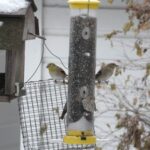Pigeons are seen by many as the rats of the sky. As a bird that is well adapted to human interaction, pigeons tend to flock in cities and urban environments where they become a messy nuisance. On the other hand, the ability to interact closely with people has made them an excellent animal for raising, and their ability to live in close quarters has made them a primary agricultural product for city dwellers.
Pigeon Background
Pigeons are Columbidae. This family of birds is madeup of both the pigeons and the doves. Were you to ask the difference between a pigeon and a dove, the honest answer is “the name.” Pigeons and doves aren’t different at all, but people seem to call them pigeons when they dislike them and doves when they like them.
They are a diverse and adaptable family, living in almost any climate and having a variety of colors, shapes and sizes. Some, like the crown pigeons, are quite large and intimidating. Even the common pigeon we think about comes in many colors and sizes, and if you dig into the bred lines, they become even more diverse.
Pigeon Fanciers
Keepers of pigeons are called pigeon fanciers. Like many agricultural pursuits, this can be done for food or for pets, and many keep the pigeons as a combination of both. They breed easily, eat cheap food, and are largely simple to keep. These pigeons are domesticated from the Rock Pigeon, and since they have been kept for so long, they have a variety of interesting traits to choose from.
For instance, pigeons have a natural homing instinct. This allows them to return to their origin over distances of up to 1000 miles. This was used in wartime to carry messages from armies to the city, and today it is a sport. Competitors bring doves which are released at great distances to see which doves can return home the fastest. As strange as it may sound, it is a popular sport and people breed and train pigeons for just this purpose.
Another skill some pigeons have is “tumbling” in which the pigeon randomly begins a freefall with rolling motions before recovering only moments from hitting the ground.
Finally, there are pigeons bred for show or food. These are almost always the pretty ones shown in competition, and like dogs or cats, breeding is a serious endeavor. No matter what you want to pursue, there is a pigeon fancier for you.
Keeping Pigeons
Among the advantages of pigeons is that they require minimal space. A small shed can be turned into a coop with some effort and some wood, and their food requirements are pretty simple. Learning to keep pigeons isn’t a hard task. In fact, in many cities people kept pigeons on the roof, interacting minimally with the ground below. This is also a good way to keep your neighbors happy.
If you like eating bird, or simply want a hobby with an affordable livestock, pigeon keeping may be for you. Be sure to check out my sources for more information on becoming a pigeon fancier.
Sources:
PigeonWeb: http://www.pigeonweb.net/pigeon-fanciers
National Pigeon Association: http://www.nationalpigeonassociation.co.uk/





